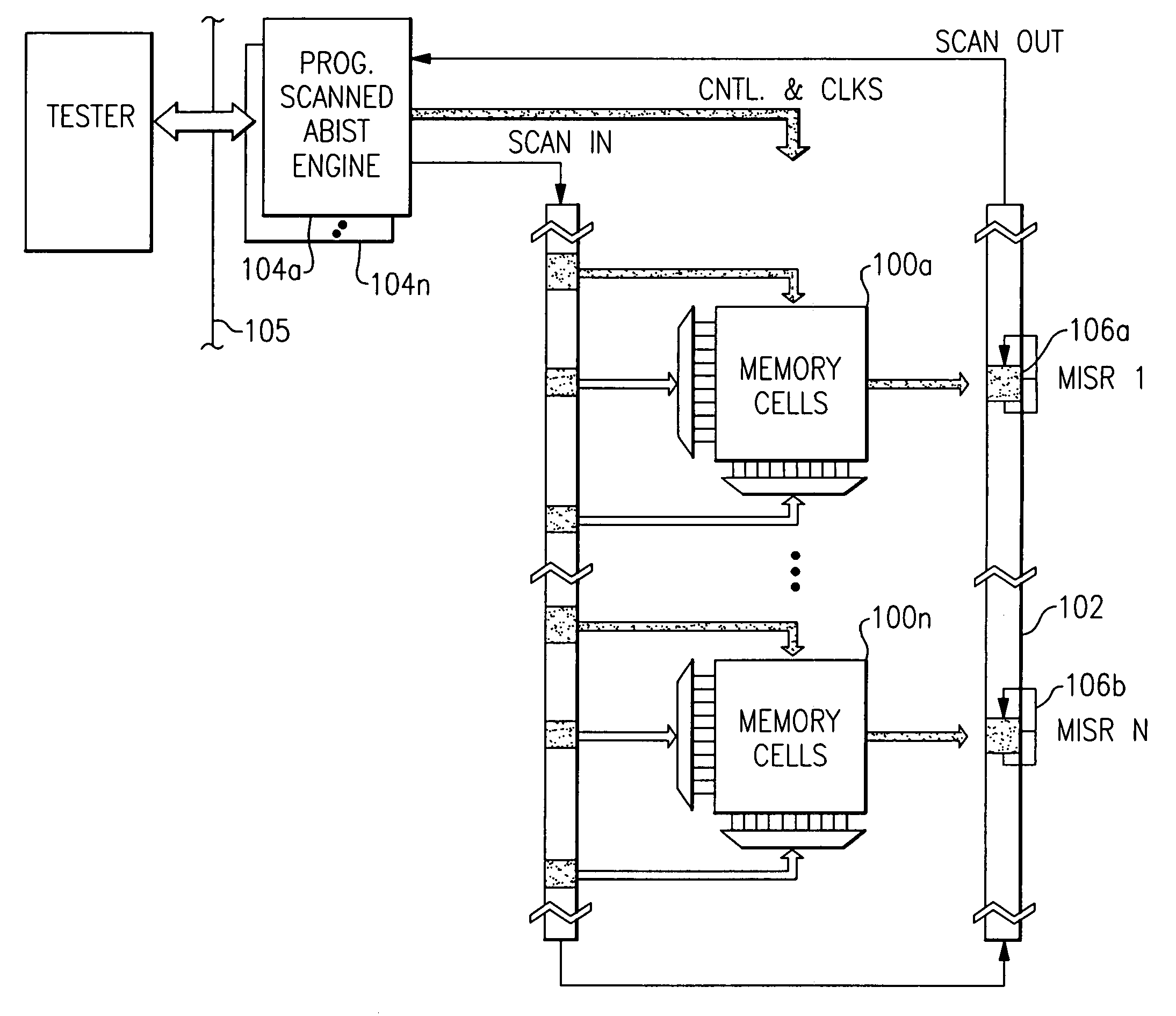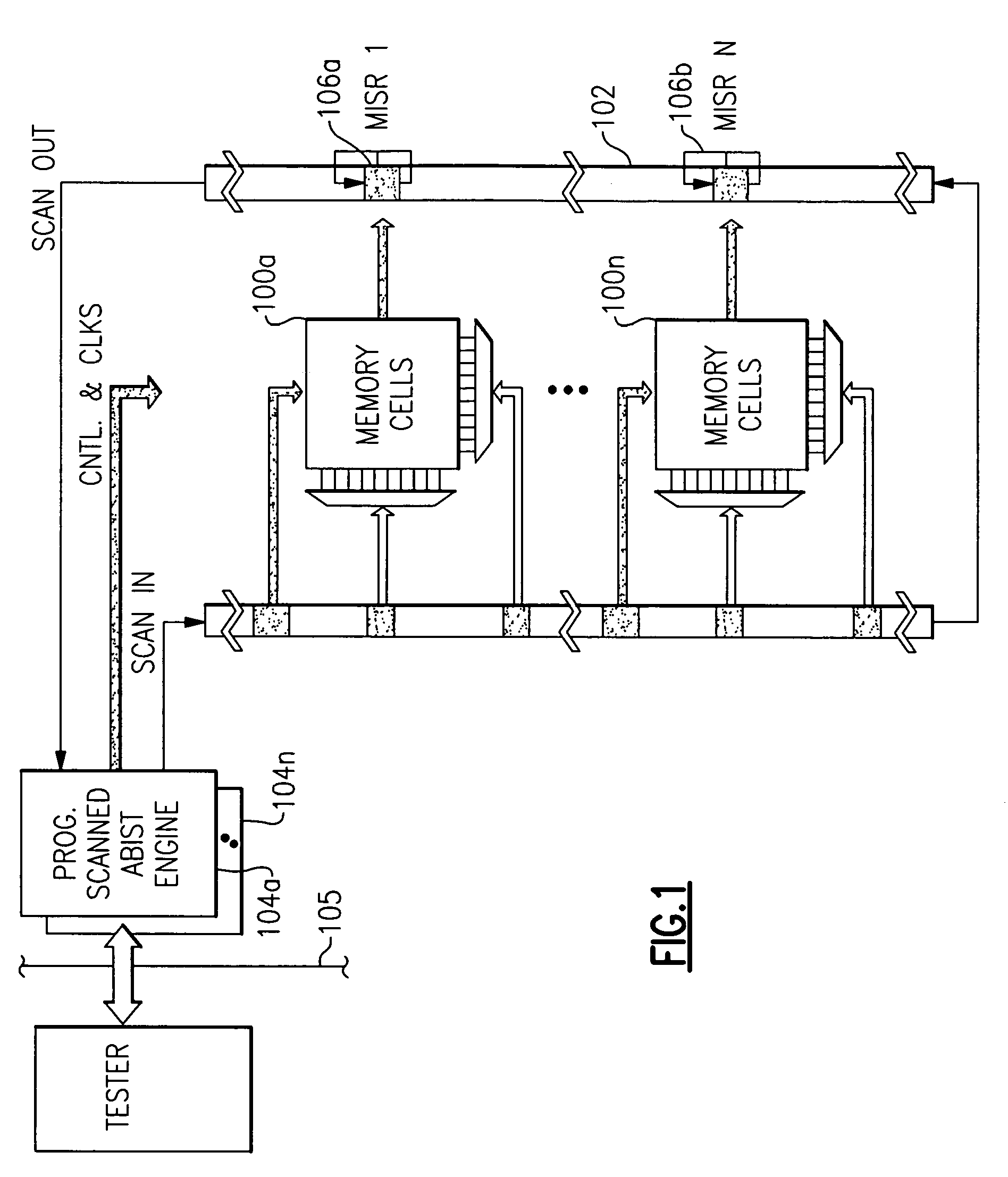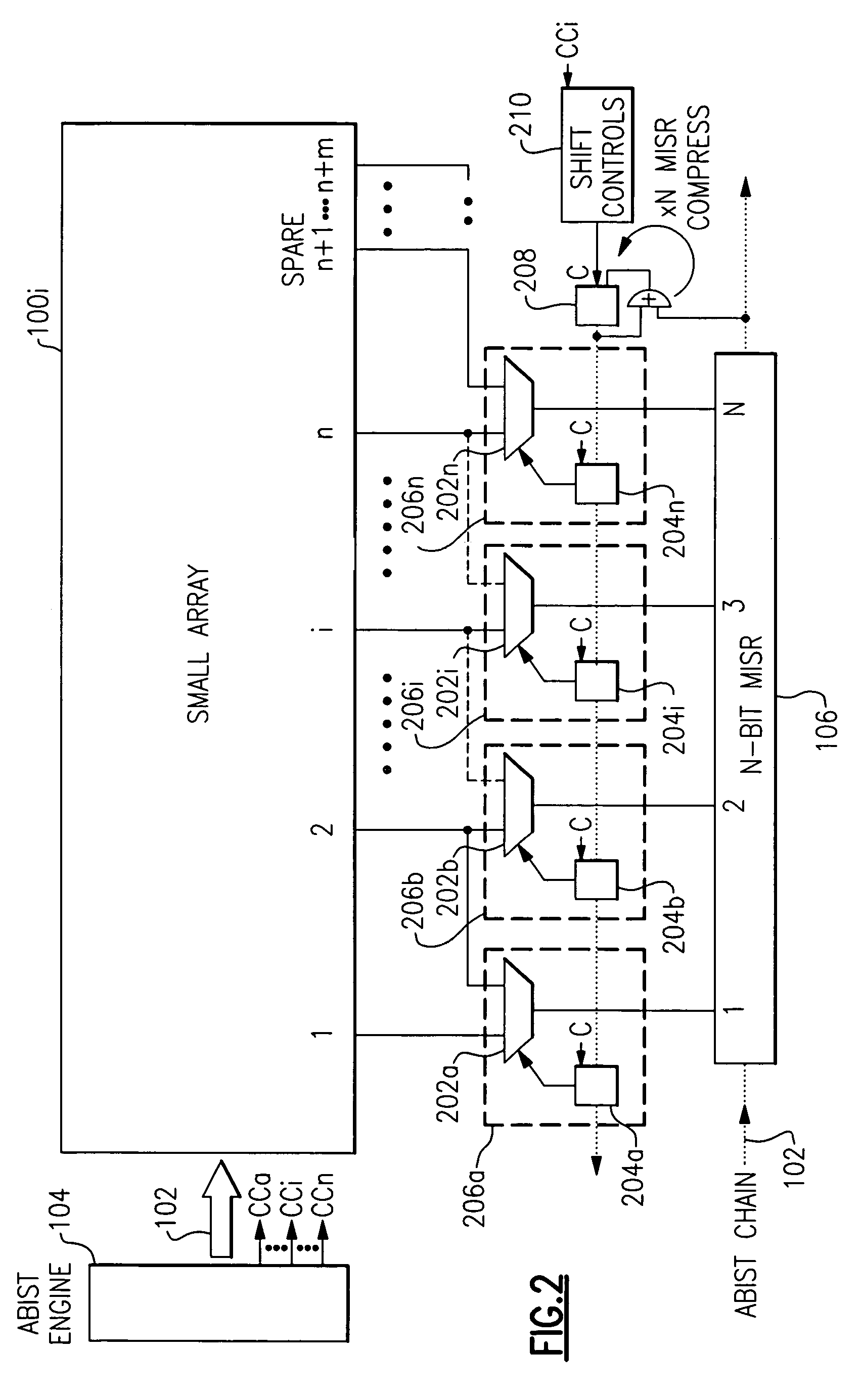Array self repair using built-in self test techniques
a self-repair and array technology, applied in the field of array self-repair, can solve the problems of excessive chip real estate consumption, low device yield, and excessive test time and complex test software support algorithms
- Summary
- Abstract
- Description
- Claims
- Application Information
AI Technical Summary
Benefits of technology
Problems solved by technology
Method used
Image
Examples
Embodiment Construction
[0015]Reference will now be made to embodiments of the invention shown in the accompanying drawings. Where possible, the same reference numerals are used throughout the drawings to refer to the same or like parts.
[0016]A typical Scanned ABIST configuration is depicted in FIG. 1. In this example, a number of arrays 100a to 100n are embedded within an integrated circuit design and accessed via a scan chain 102. On-chip ABIST engines 104a to 104n contain hard wired array test data (address, data, controls and clock signals) for all arrays 100. An off-chip tester 103 sets up the ABIST engine for testing, selects the test to be performed by the ABIST engines 104 and receives test results from the engines. The output responses for the arrays 100 are compressed into individual MISRs 106a to 106n which are also accessible via the scan chain 102. The ABIST engine 104a generates test patterns for testing the arrays 100 and seeds for the MISRs that result in the MISRs 106 of all good arrays co...
PUM
 Login to View More
Login to View More Abstract
Description
Claims
Application Information
 Login to View More
Login to View More - R&D
- Intellectual Property
- Life Sciences
- Materials
- Tech Scout
- Unparalleled Data Quality
- Higher Quality Content
- 60% Fewer Hallucinations
Browse by: Latest US Patents, China's latest patents, Technical Efficacy Thesaurus, Application Domain, Technology Topic, Popular Technical Reports.
© 2025 PatSnap. All rights reserved.Legal|Privacy policy|Modern Slavery Act Transparency Statement|Sitemap|About US| Contact US: help@patsnap.com



